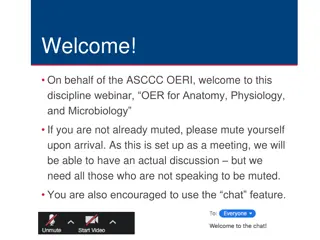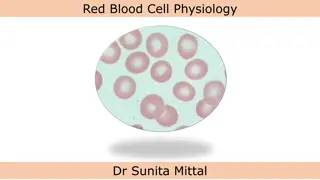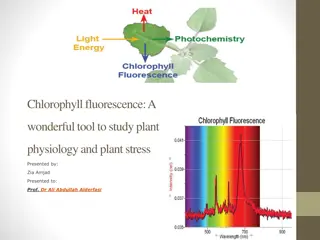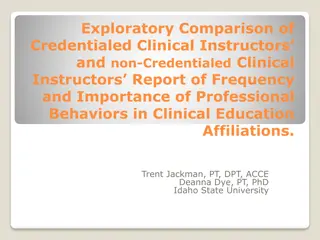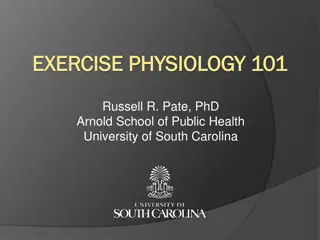Physiology of Pain
The physiology of pain, including its definition, types, causes, nociceptive pathway, transmission, and more. Gain a comprehensive understanding of pain terminology and different phases of nociceptive pain.
13 views • 40 slides
Anatomy and Physiology of the Larynx: Overview and Cartilages
Exploring the anatomy and physiology of the larynx, this content discusses the location, movements, and cartilages of the larynx. Details on the unpaired (thyroid, cricoid, epiglottis) and paired (arytenoid, corniculate, cunieform) cartilages are provided, along with their functions and characterist
9 views • 17 slides
India Alliance Clinical & Public Health fellowship in India
India Alliance Clinical & Public Health fellowship in India\n\nIndia Alliance Clinical and Public Health Research Fellowships are for Health researchers with an MD, MS, MPH, or an equivalent clinical or public health degree, who can apply for the DBT\/Wellcome Trust India Alliance Clinical and Publi
0 views • 5 slides
ASCCC OERI Webinar on OER for Anatomy, Physiology, and Microbiology
Welcome to the ASCCC OERI webinar focused on Open Educational Resources (OER) for Anatomy, Physiology, and Microbiology. This event discusses the adoption of OER in California Community Colleges, challenges faced in Anatomy and Physiology, available resources, and potential strategies to increase OE
0 views • 20 slides
Essential Overview of Gastrointestinal Physiology
Exploring the organization and general principles of gastrointestinal physiology, this content covers the anatomical and functional aspects of the GI system, including smooth muscle characteristics, neural control, blood flow, nutrient absorption, waste excretion, and regulatory functions like immun
0 views • 46 slides
Ethical Issues in Clinical Pharmacy Research by Dr. Haider Raheem Mohammad
Research ethics play a crucial role in clinical trials and therapeutic research in the field of pharmacy. From discovery to validation, all medicines undergo rigorous evaluation processes to ensure safety, efficacy, and freedom from adverse effects. Clinical trials in both animals and humans are ess
0 views • 20 slides
Laboratory Safety Rules for Physiology
Ensuring safety in the physiology laboratory is paramount. Adhering to the set rules is crucial to prevent accidents and ensure a productive learning environment. Rules include proper handling of chemicals, wearing appropriate attire, avoiding lab access without supervision, and respecting lab equip
1 views • 14 slides
Advanced Clinical Practice Framework and Pillars of Practice
The document discusses the advanced clinical practice framework and the four pillars of practice which include leadership & management, clinical practice, education, and research. It emphasizes the importance of core capabilities and area-specific competence in advanced clinical practice. The role o
2 views • 8 slides
Understanding Bacterial Physiology and Growth
Bacterial physiology encompasses the growth, nutrition, and metabolism of bacteria. Bacterial growth involves binary fission, generation time, colony formation, and is influenced by various factors such as temperature, atmosphere, moisture, and radiation. Understanding the classification based on te
0 views • 33 slides
Understanding Water Relationships in Plant Physiology
Water plays a crucial role in the physiology of plants, with most absorbed water being translocated to leaves and lost through transpiration and guttation. While essential for turgidity and mineral translocation, plant water use is often inefficient. Transpiration is the primary mode of water loss,
3 views • 22 slides
Objective Structured Clinical Examination (OSCE): A Modern Approach to Assessing Clinical Competence
The Objective Structured Clinical Examination (OSCE) is a modern examination method widely used in the field of health science to evaluate clinical skill performance. It involves stations where medical students interact with simulated patients to demonstrate competencies such as history taking, phys
1 views • 40 slides
Understanding Nerves and Muscles Physiology - Lecture Insights
Explore the intricate processes of synaptic transmission, neurotransmitters, spatial summation, temporal summation, chemical substances acting as neurotransmitters, and the effects of various factors and drugs on synapse function. Delve into the clinical significance of sedative-hypnotic drugs and t
0 views • 11 slides
Understanding the Physiology of the Sensory Organ - Tongue by B.K. Singh
Taste perception on the tongue is a vital sensory function involving sweet, sour, salty, and bitter sensations. The tongue, with its muscular movements and taste buds, plays a crucial role in mastication, swallowing, and food enjoyment. Different types of papillae on the tongue are responsible for t
4 views • 33 slides
NIMH Clinical Research Education and Monitoring Program Overview
NIMH's Clinical Monitoring and Clinical Research Education, Support, and Training Program (CREST) aims to ensure the proper conduct, recording, and reporting of clinical trials. This program includes clinical monitoring plans, guidelines for site monitoring activities, and independent clinical monit
1 views • 29 slides
Understanding Cardiac Electrical Activity in Physiology Team's Cardiovascular Block Lecture
Dive into the intricate details of cardiac electrical activity in this lecture led by Physiology Team 436. Explore topics like the cardiac conductive system, action potentials, refractory periods, excitation-contraction coupling, and the effects of autonomic stimulation on heart electrophysiology. D
0 views • 29 slides
Understanding Microbial Nutrition and Bacterial Physiology
Microbial nutrition involves essential elements required for microbial growth and energy production. Bacterial physiology delves into the structures and functions that enable bacteria to thrive, from cell wall composition to enzyme activities. Major elements like C, O, H, N, S, and P are crucial for
2 views • 20 slides
Understanding Non-Clinical Development in Therapeutic Innovation
The European Patients Academy on Therapeutic Innovation focuses on the non-clinical development phase of medicine, delving into efficacy assessment, safety evaluation, and manufacturing process considerations. Non-clinical studies are essential for decision-making in clinical trials, marketing appli
1 views • 26 slides
Understanding Plant Physiology and Water Relations
Plant physiology, specifically water relations, is crucial for the survival and growth of plants. This study delves into the mechanisms of water absorption, cell components like vacuoles and protoplasm, and the concept of water potential. Water plays a vital role in plant functions, from providing m
2 views • 32 slides
Best Lower back pain treatment in Upper Mount Gravatt
Are you looking for the Best Lower back pain treatment in Upper Mount Gravatt? Then contact JY Exercise Physiology. They Specialising in exercise physiology, sport rehabilitation, injury rehabilitation, and powerlifting coaching, they understand that
0 views • 6 slides
High-Altitude Physiology and Its Effects on the Human Body
Understanding the impact of high altitudes on human physiology is crucial for aviation and deep-sea activities. Barometric pressures and alveolar oxygen levels change significantly with altitude, leading to hypoxia-related issues. Factors like carbon dioxide and water vapor further affect alveolar o
1 views • 29 slides
Understanding Evidence-Based Medicine and Clinical Decision-Making
European Patients Academy on Therapeutic Innovation emphasizes the importance of Evidence-Based Medicine (EBM) in providing optimum clinical care. EBM involves systematic review and utilization of clinical research for informed decision-making, benefiting patients in disease management and treatment
7 views • 20 slides
Understanding Physiology: The Science of Living Organisms
Physiology is the study of processes and functions in living organisms, encompassing various disciplines such as physics, chemistry, and mathematics. It delves into the intricate regulation and maintenance of internal environments within our bodies, vital for optimal cell, tissue, and organ function
4 views • 15 slides
Red Blood Cell Physiology
Delve into the world of red blood cells (RBCs) with a focus on their morphology, functions, and hematological indices. Learn about the structure, function, and clinical applications of RBCs, as well as important indices like Mean Corpuscular Volume (MCV) and Mean Corpuscular Hemoglobin (MCH). Explor
0 views • 14 slides
Introduction to Plant Physiology: Exploring the Functioning of Plants
Plant physiology is a crucial subdiscipline of botany that delves into the processes and functions operating within plants. This field closely examines areas like plant morphology, ecology, cell biology, and genetics, shedding light on vital processes such as photosynthesis, respiration, and more. T
1 views • 7 slides
Understanding Puberty: Physiology, Changes, and Management
Puberty is a normal physiological process marking the transition from childhood to sexual maturity. Understanding its physiology, factors influencing it, physical changes, stages of development, onset, and precocious puberty is essential for proper diagnosis and management. Various factors like race
1 views • 24 slides
Essential Aspects of the Clinical Interview in Psychology
Clinical interviews play a crucial role in the assessment conducted by clinical psychologists, showcasing essential qualities like validity, reliability, and clinical utility. Understanding the importance of feedback and honing general and specific skills as an interviewer are key components in cond
1 views • 17 slides
Understanding Chlorophyll Fluorescence in Plant Physiology
Chlorophyll fluorescence is a powerful tool developed in the 1990s for studying plant physiology and stress. It provides insights into photosynthetic processes at different levels, from subcellular to canopy. By measuring chlorophyll fluorescence, researchers can assess the efficiency of photosynthe
0 views • 16 slides
Clinical Research Guidelines and Regulations Overview
Clinical research encompasses various guidelines and regulations to ensure the protection of human subjects and the credibility of study results. Key aspects include Good Clinical Practice (GCP) standards, Title 45 of the Code of Federal Regulations (CFR) Part 46, and additional CFR sections for cli
0 views • 46 slides
Exploring the Fascinating World of Biology and Human Biology
Biology is a broad scientific field encompassing the study of living organisms and their various aspects, from anatomy and physiology to genetics and evolution. Branches of biology include anatomy, histology, cytology, physiology, embryology, genetics, molecular biology, biochemistry, zoology, botan
0 views • 21 slides
Ohio Clinical Alliance: Transforming Clinical Experiences
The Ohio Clinical Alliance, through collaborative partnerships, aims to enhance clinical preparation for educators. The leadership team comprises various representatives and organizations committed to improving student learning. Their activities include retreats and meetings to ensure effective comm
0 views • 27 slides
Overview of Appendicular Skeleton and Bones by Dr. Mahdi H. Hammadi, PhD, Sc. Clinical Physiology
Dr. Mahdi H. Hammadi, PhD, Sc. in Clinical Physiology, provides an insightful look into the bones of the appendicular skeleton, including the shoulder girdle, upper limbs, wrist bones, and hand bones. The text covers the composition and functions of these skeletal elements in a comprehensive manner,
0 views • 21 slides
Perception and Awareness of Clinical Research in Trial Participants and the Public of Andhra Pradesh
This study focuses on understanding the perception and awareness of clinical research among trial participants and the general public in Andhra Pradesh. It highlights the importance of creating awareness about clinical research, previous study results, public attitudes towards clinical trials, and e
0 views • 24 slides
Understanding the Significance of Plant Physiology in Agriculture
Plant physiology plays a crucial role in understanding how plants adapt to various environmental conditions, develop mechanisms to cope with stress, and optimize their growth and productivity. This branch of botany explores the structural and functional aspects of plants, delving into cellular, bioc
0 views • 11 slides
Comparison of Professional Behaviors in Clinical Education
Professional behavior characteristics play a crucial role in enhancing student learning during clinical education. This study examines the differences in reported importance and frequency of professional behaviors between credentialed and non-credentialed clinical instructors. The background outline
0 views • 28 slides
Enhancing Clinical Academic Collaboration Between Universities and NHS Trusts
Clinical academics play a crucial role in integrating clinical practice, research, and education within the NHS. Collaboration between universities and NHS trusts is key to ensure clinical academics address the right questions for patient care and societal benefit. Challenges include an aging clinic
0 views • 29 slides
Understanding Exercise Physiology Fundamentals
Explore the basics of exercise physiology, including physiologic responses to acute exercise, functional adaptations to chronic exercise, and the mediation of health effects. Learn the difference between physical activity and exercise, the concept of work in exercise, and the energy expenditure invo
0 views • 31 slides
Understanding the Anatomy, Physiology, and Disorders of the Gallbladder and Bile Duct
The gallbladder and bile duct anatomy includes details on shape, length, capacity, blood supply, lymphatics, physiology, bile production, functions, investigations, congenital abnormalities, types of obstructions, clinical features, differential diagnosis, and treatment options including surgery and
0 views • 8 slides
Understanding Clinical Trials: Phases, Types, and Definitions
Clinical trials play a crucial role in advancing medical research and treatment options. This comprehensive guide covers the basics of clinical trials, including their definition, phases, types, and key definitions like IND, IDE, NDA, and more. Discover how different phases of trials work, the vario
0 views • 16 slides
Understanding the Urinary System: Bladder Anatomy and Function
Exploring the anatomy and physiology of the urinary system with a focus on the bladder, including details on muscle structure, capacity for urine collection, and the role of the detrusor muscle in micturition. Learn about key components such as the trigone and bladder neck, as well as innervation an
0 views • 19 slides
Understanding Cardiac Physiology: Electrical System and Excitation
Explore the intricate details of cardiac physiology, focusing on the electrical conducting system, spread of excitation, ECG interpretation, action potentials, and hemodynamic parameters. Learn about pacemaker cells, differences between ventricular and pacemaker action potentials, and the initiation
0 views • 26 slides



